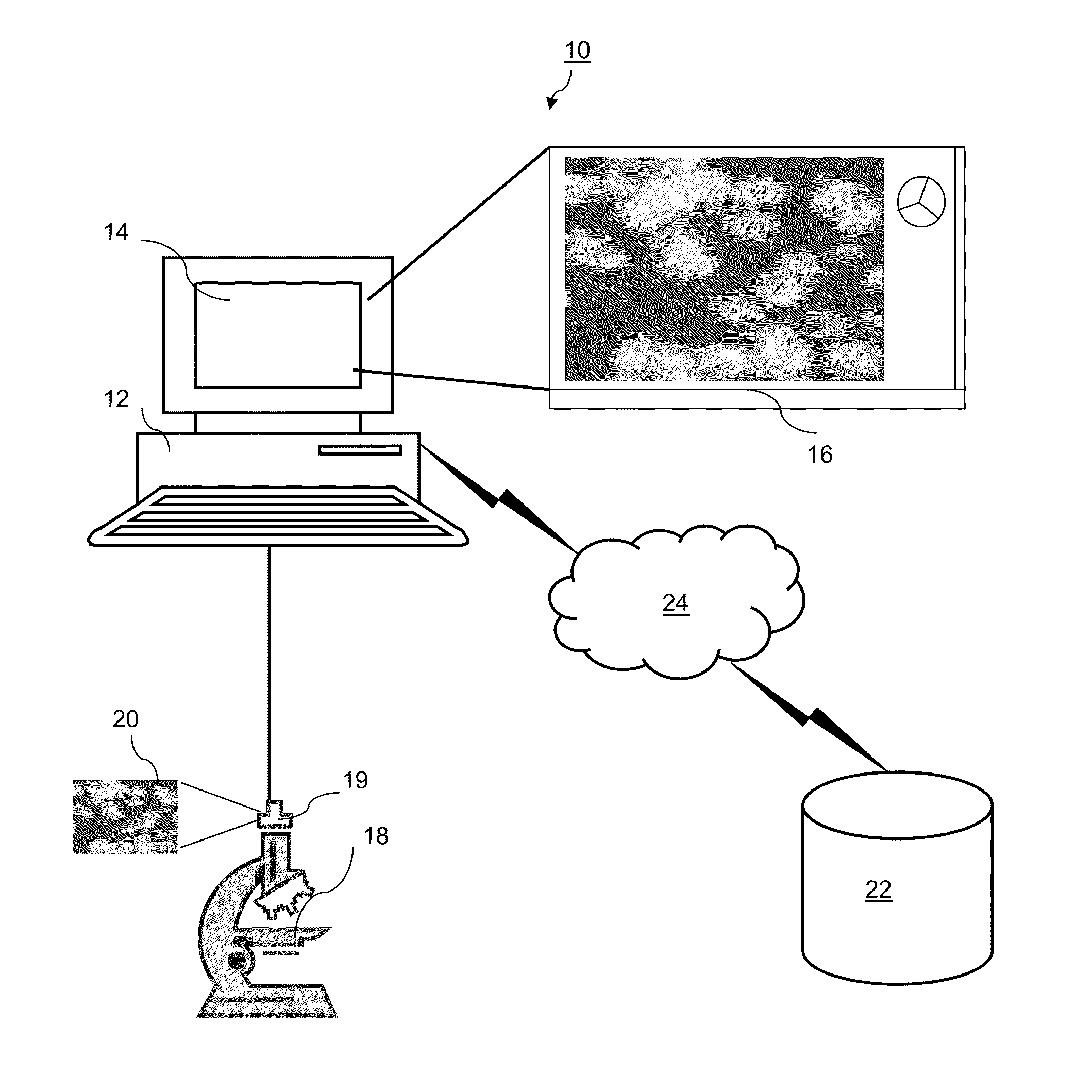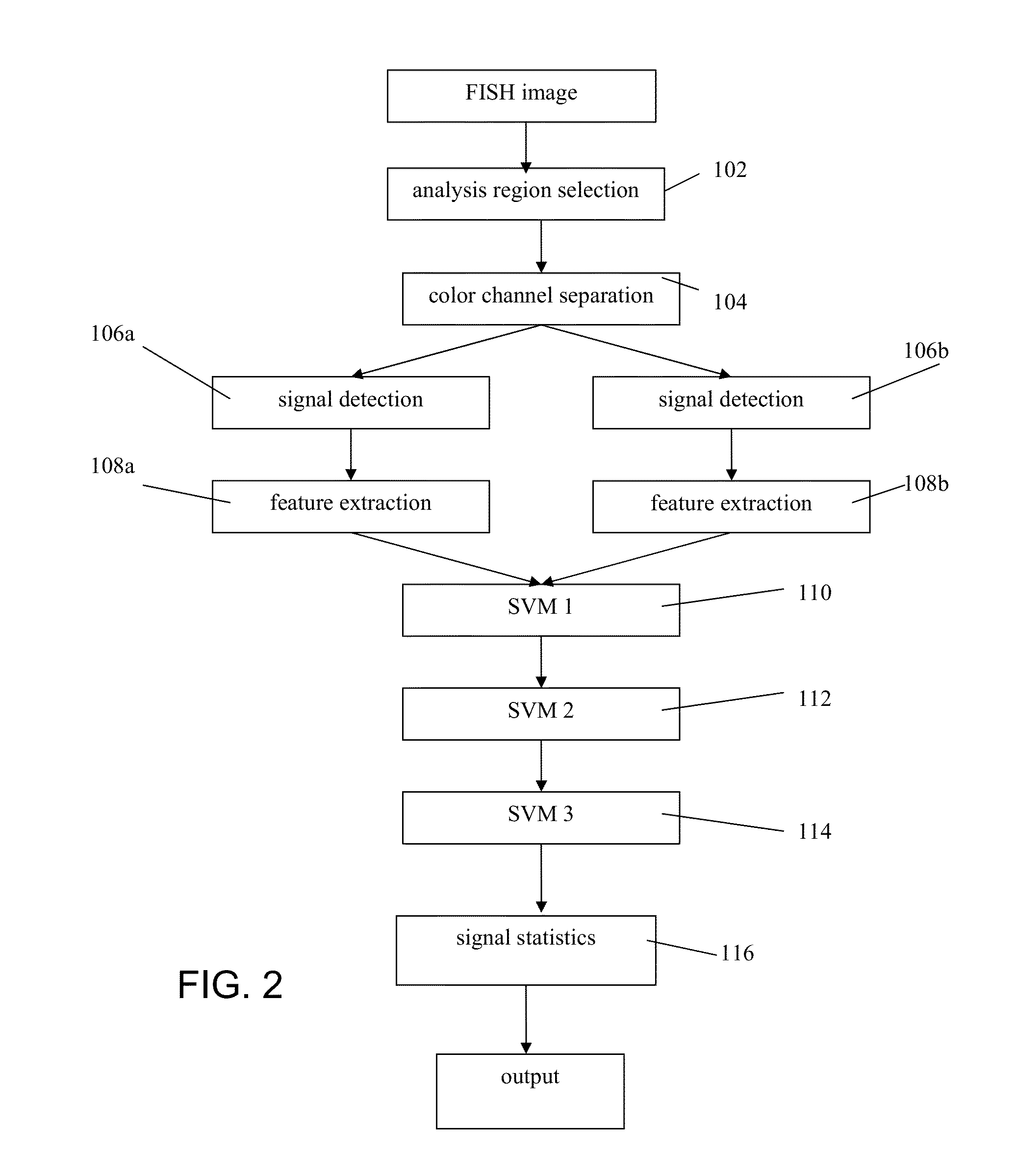Automated fish reader using learning machines
- Summary
- Abstract
- Description
- Claims
- Application Information
AI Technical Summary
Benefits of technology
Problems solved by technology
Method used
Image
Examples
Embodiment Construction
[0023]For purposes of the description of the invention, the terms “dot” or “spot”, or pluralities thereof, may be used interchangeably to refer to the detected fluorescence signal(s) resulting from hybridization of tagged probes with target sequences for the detection of abnormalities using tissue sections or cell samples.
[0024]FIG. 1 is a block diagram illustrating an exemplary automated fluorescence in situ hybridization (FISH) analysis system 10. The exemplary system 10 includes one or more computers 12 with a display 14 (one of which is illustrated). The display 14 presents a windowed graphical user interface (“GUI”) 16 to a user. The display 14 may be a touch screen, allowing entry of selections using the screen, or a user interface in the form of a mouse, stylus, touch pad, trackball, or other device may be connected by cable or wireless link to the computer 12.
[0025]The system 10 further includes a microscope 18 with a digital detector 19 such as a camera or other optical det...
PUM
 Login to View More
Login to View More Abstract
Description
Claims
Application Information
 Login to View More
Login to View More - R&D
- Intellectual Property
- Life Sciences
- Materials
- Tech Scout
- Unparalleled Data Quality
- Higher Quality Content
- 60% Fewer Hallucinations
Browse by: Latest US Patents, China's latest patents, Technical Efficacy Thesaurus, Application Domain, Technology Topic, Popular Technical Reports.
© 2025 PatSnap. All rights reserved.Legal|Privacy policy|Modern Slavery Act Transparency Statement|Sitemap|About US| Contact US: help@patsnap.com



